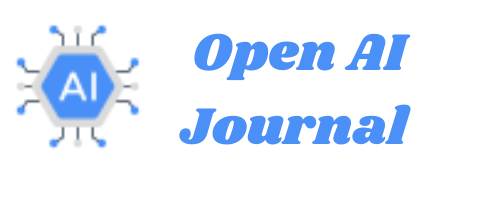Using AI at Work, Ruin Your Reputation? The Alarming Truth No One Wants to Admit

Table of Contents
I. Introduction
Artificial Intelligence (AI) is everywhere—from automating mundane tasks to generating business reports and even writing marketing copy. It’s seductive in its speed, precision, and promise. But here’s the twist that no one wants to talk about: using AI at work might actually ruin your reputation.
It sounds ironic, doesn’t it? The very tools designed to boost productivity and help us excel might be silently sabotaging our image in the eyes of colleagues and managers. Recent studies, including a fascinating one covered by ZDNet, reveal a disturbing pattern—employees using AI tools are often viewed as less competent or as “cutting corners,” even if their output is superior.
Let’s dig deeper into this uncomfortable truth and explore what it means for the future of work.
II. The Rise of AI in the Workplace
The integration of AI into the workplace has been swift and expansive. According to a Microsoft Work Trend Index, as of 2024, 75% of global knowledge workers reported using AI tools in their roles. These tools assist in various tasks, from automating routine processes to providing insights for decision-making.
A study by Lifewire highlighted that AI-assisted tasks such as resume writing, email generation, and cover letter creation have become increasingly popular, with resume help alone attracting over 40,000 monthly searches. The same study noted that 90% of users reported time savings, and 85% felt that AI enabled them to focus on more important responsibilities.
Despite these benefits, the adoption of AI is not without its challenges. A Pew Research Center survey revealed that 52% of workers feel worried about how AI may be used in the workplace in the future, with only 36% expressing hopefulness. This apprehension is further compounded by the fact that many organizations lack clear guidelines on AI usage, leading to uncertainty and skepticism among employees.
III. The Hidden Cost: How Using AI at Work May Damage Your Reputation
While AI tools offer undeniable advantages in terms of efficiency and productivity, their use can carry unintended consequences for employees’ reputations. A study conducted by researchers at Duke University found that individuals who use AI applications at work are often perceived by their colleagues as less diligent, lazier, and less competent than those who do not use such tools. This perception persists even when the quality of work remains consistent across both groups.
The stigma associated with AI usage is further evidenced by a study from Ivanti, which revealed that 29% of UK workers are secretly using generative AI tools at work. Among these, 28% feared employer backlash, while 38% viewed AI as a competitive advantage. Additionally, 27% reported experiencing “AI-fueled impostor syndrome,” doubting their skills due to reliance on AI.
These findings underscore a critical issue: the lack of transparency and open dialogue about AI usage in the workplace. Without clear policies and a culture that embraces technological advancements, employees may continue to conceal their use of AI, potentially hindering collaboration and innovation.
IV. Why Some Professionals Hide Their Use of AI

In today’s rapidly evolving workplace, the integration of Artificial Intelligence (AI) tools has become increasingly common. However, a significant number of professionals choose to conceal their use of these tools. This concealment stems from various factors, including fear of judgment, job security concerns, and the desire to maintain a competitive edge.
A study by Ivanti revealed that 29% of UK workers are secretly using generative AI tools at work. Among these individuals, 28% feared employer backlash, while 38% viewed AI as a competitive advantage. Additionally, 27% reported experiencing “AI-fueled impostor syndrome,” doubting their skills due to reliance on AI.
The stigma associated with AI usage is further evidenced by a study from Duke University, which found that individuals who use AI applications at work are often perceived by their colleagues as less diligent, lazier, and less competent than those who do not use such tools.
These perceptions contribute to a culture where professionals feel compelled to hide their AI usage, fearing that transparency might lead to negative evaluations or even job loss. This concealment not only affects individual well-being but also hampers organizational transparency and innovation.
V. Power vs. Peril: The Productivity Paradox
The adoption of AI in the workplace promises increased efficiency and productivity. However, the reality often presents a paradox where the anticipated productivity gains are not fully realized. This phenomenon, known as the “productivity paradox,” highlights the complexities of integrating AI into existing workflows.
A report by McKinsey & Company noted that despite 78% of companies using AI in at least one function in 2024, most organizations are failing to achieve significant financial returns. Only 1% of U.S. companies have successfully scaled AI, while most are stuck in pilot phases.
Furthermore, a study by Upwork found that 77% of full-time employees feel that generative AI is making work harder, not easier. This sentiment underscores the challenges employees face in adapting to new technologies without adequate support and training.
The productivity paradox is also influenced by systemic constraints such as regulatory approvals, funding cycles, and workforce skills. For instance, an AI system designed to create breakthrough drugs still relies on clinical trials, approvals, and manufacturing, which can limit how fast AI boosts productivity.
VI. Managerial & Organizational Perceptions
Managers and organizations play a pivotal role in shaping the adoption and perception of AI in the workplace. Their attitudes towards AI significantly influence how employees engage with these technologies.
A study published in ScienceDirect indicated that managers perceive more risk and are less willing to invest in AI usage in human resources compared to finances and marketing. This cautious approach can create an environment where employees feel discouraged from openly using AI tools.
Additionally, a report by McKinsey & Company highlighted a disconnect between employees and leaders regarding AI usage. While only 20% of leaders believe employees will use generative AI for more than 30% of their daily tasks within a year, employees are twice as likely (47%) to believe they will.
This disparity in perceptions can lead to misaligned expectations and hinder the effective integration of AI into daily operations. Organizations need to foster open communication and provide clear guidelines to bridge this gap and encourage responsible AI usage.
VII. The Ethical & Trust Dimension

As AI becomes increasingly integrated into workplace operations, ethical considerations and trust issues have come to the forefront. Employees and employers alike grapple with questions about data privacy, algorithmic bias, and the transparency of AI decision-making processes.
A significant concern is the potential for AI systems to perpetuate existing biases. A study published in Manufacturing & Service Operations Management found that AI models like GPT-3.5 and GPT-4 can exhibit human-like cognitive biases, leading to irrational decision-making in nearly half of tested scenarios. These biases stem from the data used to train AI systems, which often reflect societal prejudices.
Privacy is another critical issue. AI systems can analyze vast amounts of personal and professional information, raising concerns about unauthorized access and misuse. According to Harvard Business School, ethical concerns around AI privacy focus on collecting, storing, and using employee data, emphasizing the need for proper protection to avoid privacy violations.
Trust in AI also varies across demographics. Deloitte’s 2025 TMT Predictions highlight a gender trust gap in generative AI usage, with only about 50% of Australian women expected to use and trust GenAI compared to 70% of men. This discrepancy is linked to higher instances of negative AI interactions experienced by women, such as deepfake harassment.
Addressing these ethical concerns requires a multifaceted approach, including transparent AI governance, regular audits for bias, and inclusive training programs to build trust among all employees.
VIII. How to Use AI at Work Without Damaging Your Reputation
While AI tools offer numerous benefits, using them without proper guidance can inadvertently harm one’s professional reputation. Employees may fear being perceived as lazy or incompetent if they rely too heavily on AI, leading many to use these tools covertly. A global study by KPMG and the University of Melbourne revealed that over half (57%) of workers conceal their use of AI from their employers, often presenting AI-generated content as their own.
To navigate this landscape safely, consider the following strategies:
- Understand Company Policies: Before using AI tools, familiarize yourself with your organization’s guidelines on AI usage. If no policy exists, advocate for the development of one to ensure clarity and consistency.
- Use AI as a Supplement, Not a Replacement: Leverage AI to enhance your work, not to do it entirely. Use AI for brainstorming, drafting, or automating repetitive tasks, but ensure the final output reflects your expertise and judgment.
- Maintain Transparency: Be open about your use of AI tools with colleagues and supervisors. Transparency fosters trust and can lead to collaborative discussions about best practices.
- Protect Sensitive Information: Avoid inputting confidential or proprietary data into AI tools, especially those that are publicly accessible. Use company-approved platforms that offer security and data protection.
- Continuously Educate Yourself: Stay informed about the capabilities and limitations of AI tools. Regularly update your knowledge to use these tools effectively and responsibly.
By adopting these practices, you can harness the benefits of AI while safeguarding your professional reputation.
IX. Building AI Literacy in the Workplace
Developing AI literacy among employees is crucial for the successful integration of AI technologies in the workplace. AI literacy encompasses understanding how AI works, its applications, limitations, and ethical considerations
A survey by SAP SuccessFactors found that nearly 70% of people with high AI literacy expected positive outcomes from using AI at work, compared to 29% of people with low AI literacy. Those with low AI literacy were more likely to feel apprehensive, afraid, and distressed about using AI at work.
To build AI literacy, organizations can implement the following initiatives:
- Training Programs: Offer workshops and courses that cover the basics of AI, its applications, and ethical considerations. Tailor these programs to different roles and departments to ensure relevance.
- Mentorship Opportunities: Encourage knowledge sharing by pairing employees with varying levels of AI proficiency. This approach fosters a collaborative learning environment.
- Resource Libraries: Provide access to articles, tutorials, and case studies that employees can explore at their own pace.
- Open Discussions: Create forums for employees to discuss AI-related topics, share experiences, and voice concerns. Open dialogue promotes a culture of continuous learning and adaptation.
Investing in AI literacy not only empowers employees but also positions organizations to leverage AI technologies effectively and ethically.
By addressing ethical considerations, promoting responsible AI usage, and investing in AI literacy, organizations can navigate the complexities of AI integration, ensuring that both employees and the organization reap the benefits of this transformative technology.
X. Future Outlook: Will AI Normalize or Polarize Reputations?
As AI continues to permeate various aspects of work, its impact on professional reputations is becoming increasingly significant. The trajectory of this influence hinges on several factors, including organizational culture, policy development, and individual adaptability.
On one hand, AI has the potential to normalize its usage across professions, integrating seamlessly into daily tasks and becoming an accepted tool akin to email or spreadsheets. This normalization could lead to a workplace where AI proficiency is a standard expectation, and its use is transparent and encouraged.
Conversely, there’s a risk of polarization, where individuals adept at leveraging AI tools may be viewed as more competent or forward-thinking, while those less familiar may be perceived as outdated or resistant to change. This divide could exacerbate existing inequalities and create tension within teams.
A study by KPMG and the University of Melbourne found that over half (57%) of workers conceal their use of AI from their employers, often presenting AI-generated content as their own. This behavior indicates a lack of trust and clear guidelines around AI usage, which can contribute to reputational risks.
To navigate this landscape, organizations must foster an environment that promotes open dialogue about AI, provides training to enhance digital literacy, and establishes clear policies that define acceptable use. Such measures can help mitigate polarization and support a more inclusive approach to AI integration.
XI. Quick Tips for Safe AI Usage at Work
To ensure responsible and effective use of AI in the workplace, consider the following best practices:
- Understand Company Policies: Familiarize yourself with your organization’s guidelines on AI usage to ensure compliance and avoid unintended breaches.
- Maintain Data Privacy: Avoid inputting sensitive or confidential information into AI tools, especially those that are publicly accessible.
- Use AI as a Support Tool: Leverage AI to enhance your work, not replace your judgment. Always review AI-generated outputs critically.
- Stay Informed: Keep abreast of developments in AI technology and its applications relevant to your role.
- Promote Transparency: Be open about your use of AI tools with colleagues and supervisors to foster a culture of trust and collaboration.
- Seek Training Opportunities: Engage in training programs to improve your AI literacy and stay competitive in the evolving workplace landscape.
By adhering to these practices, employees can utilize AI tools effectively while maintaining their professional reputation and contributing to a transparent and ethical workplace culture.
XII. Conclusion: A Call for Transparency and Cultural Change
The integration of AI into the workplace is not merely a technological shift but a cultural one. To harness the benefits of AI while safeguarding professional reputations, organizations must prioritize transparency and foster a culture of continuous learning and adaptability.
Transparency involves clear communication about how AI tools are used, the data they process, and the decisions they influence. Employees should be informed about the presence of AI in their workflows and understand its role in decision-making processes.
Cultural change requires leadership to model ethical AI usage, encourage open discussions about its implications, and provide resources for employees to develop their skills. By doing so, organizations can build trust and reduce the stigma associated with AI, allowing it to be a collaborative partner rather than a clandestine tool.
Ultimately, the goal is to create a workplace where AI enhances human capabilities without compromising integrity or equity. Achieving this balance necessitates deliberate efforts to align technology adoption with organizational values and employee well-being.
FAQ: Understanding the Impact of AI on Reputation and Careers
1. What is the reputational risk of AI?
AI can pose a significant reputational risk if it’s used inappropriately or without transparency. The biggest concern is the perception of laziness or lack of competence. When people rely too heavily on AI, especially for tasks that demand creativity or problem-solving, others may start questioning their skills and abilities.
For example, a report by KPMG and the University of Melbourne found that over 57% of employees conceal their use of AI, worried that it will be seen as cheating or not doing their job. If word gets out that you’ve been using AI to do your work instead of relying on your own skills, it can tarnish your reputation in the workplace. AI, in this sense, might be viewed less as a tool and more as a shortcut or crutch.
2. What are the risks of using AI in the workplace?
The risks of using AI in the workplace range from ethical issues to the potential loss of human jobs. First, there’s the issue of bias—AI systems can inherit biases from the data they’re trained on, leading to skewed decisions that may reinforce discrimination in hiring, promotions, or project assignments.
Second, there’s data privacy—AI can process vast amounts of sensitive data, making it a target for breaches if not properly safeguarded. Finally, there’s the risk of over-reliance on AI, which could cause employees to miss out on opportunities to develop essential skills, leading to stagnation in their careers.
3. How does AI affect the workplace?
AI affects the workplace by automating routine tasks, improving decision-making processes, and enhancing productivity. It can help reduce human error in data-driven tasks and free up employees for more creative or strategic work.
However, AI also disrupts traditional workflows, especially in industries where automation can replace manual labor. It’s a double-edged sword. On one hand, AI can make employees more efficient and give companies a competitive edge; on the other, it can lead to job displacement, especially in roles that are highly repetitive or based on routine data analysis.
4. What is the risk of using AI?
The main risks of using AI are job displacement, ethical concerns, and misuse. Job displacement is the biggest fear because AI has the potential to replace human labor in several industries, from customer service to even more creative roles. Ethical concerns, as mentioned earlier, include biases in algorithms and the misuse of personal data. Finally, there’s the risk of AI being misused for harmful purposes, such as generating deepfakes or automating tasks that should require human judgment.
5. What are the 3 big ethical concerns of AI?
AI’s biggest ethical concerns include:
- Bias and Discrimination: AI systems can unintentionally reinforce biases that are present in the data they are trained on, leading to unfair or discriminatory outcomes in hiring, lending, or criminal justice.
- Privacy: AI systems often have access to sensitive personal data. Without proper safeguards, they can compromise privacy, leading to breaches that affect both individuals and organizations.
- Accountability: As AI systems make more decisions, it becomes harder to determine who is responsible when something goes wrong. Should an AI system make a biased hiring decision, who’s liable—the developer, the company, or the AI itself?
6. What is the biggest threat of AI?
The biggest threat of AI is autonomy—AI systems making decisions without human oversight or intervention. As AI grows more sophisticated, it can take over tasks and even decision-making in ways that might not always align with human values. Imagine AI controlling autonomous weapons or making high-stakes decisions like who gets hired, fired, or promoted. The lack of transparency in these decision-making processes could create risks that are difficult to mitigate. Additionally, AI’s ability to manipulate public opinion (e.g., through deepfakes or biased news algorithms) could also be a major threat, especially in the context of political polarization.
7. How does AI impact careers?
AI has a dual impact on careers: empowerment and displacement. On one hand, it can enhance your career by automating mundane tasks, giving you more time to focus on strategic or creative endeavors. For example, AI tools can help marketers analyze customer data and create personalized campaigns more efficiently.
On the other hand, AI also poses a threat to certain job roles, particularly those that are repetitive or data-driven, such as administrative assistants or basic customer support positions. Professionals who fail to adapt to AI advancements may find themselves at a career disadvantage. Developing AI literacy is essential for staying relevant in the evolving job market.
8. How are businesses using AI according to McKinsey?
McKinsey’s latest research shows that businesses are increasingly adopting AI for enhancing productivity, improving customer experiences, and driving innovation. For instance, AI is used to optimize supply chains, automate customer service through chatbots, and even personalize marketing efforts by analyzing vast amounts of consumer data. McKinsey’s analysis also indicates that companies that use AI are significantly more likely to experience higher profitability and improved efficiency. However, to reap these rewards, businesses must invest in training their workforce to work effectively with AI, ensuring that employees can leverage AI to enhance their own productivity.
9. How is AI transforming business operations in 2025?
By 2025, AI is expected to transform business operations in more profound ways. Automation will dominate more industries, allowing businesses to reduce human error, increase productivity, and streamline operations. AI will play a crucial role in decision-making, offering data-driven insights that lead to more accurate predictions and strategic choices.
Customer experience will be enhanced through the use of AI-driven personalization, improving the way brands interact with consumers. Moreover, businesses will also integrate AI into human resources, automating processes like recruitment, training, and performance reviews.
10. How do I protect my career from AI?
To protect your career from the disruptive effects of AI, focus on enhancing your AI literacy and soft skills. AI is here to stay, so learning how it works, how to interact with it, and how to leverage it in your role will make you indispensable. Moreover, focus on developing skills that AI can’t replicate easily, such as creativity, emotional intelligence, and complex problem-solving. Take courses in areas like data analysis, machine learning, and AI ethics to stay ahead of the curve. By embracing AI as a tool to enhance your abilities rather than as a threat, you can ensure your career remains relevant in the age of automation.




